Endeavour Features: Space-group Determination
Endeavour Features Overview...
Previous: Structure Solution Wizard...
Next: Molecular Structures...
If the space-group cannot be determined from the diffraction pattern without
ambiguity, the structure must be solved in a common subgroup of several
possible space-groups or even in P1. Hence, the full space-group must be
determined once a reasonable structural model has been found. Endeavour
provides an easy-to-use tool (SFND/RGS; written by R. Hundt, Bonn 2000) in
order to perform this task.
Since version 1.6 this task can be done automatically, either by setting the option
"(Re-)determine space group after optimization" or by simply clicking the corresponding
symbol in the toolbar.
Besides this, the space-group determination can be done step-by-step using variable
tolerance parameters and listing found symmetry elements, using the "Find Symmetry"
wizard. The example with the screen shots below starts with the structure of RuS2 that has been
solved in P1:
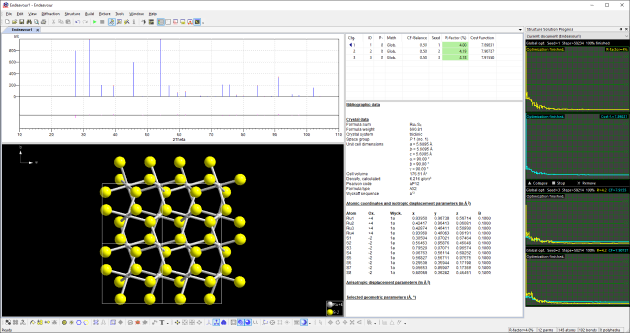
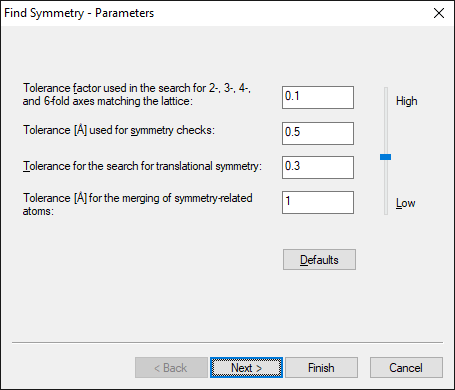 |
First, the tolerance parameters for
the search of symmetry elements have to be set; good default values are
provided which allow a successful space-group determination in many cases. |
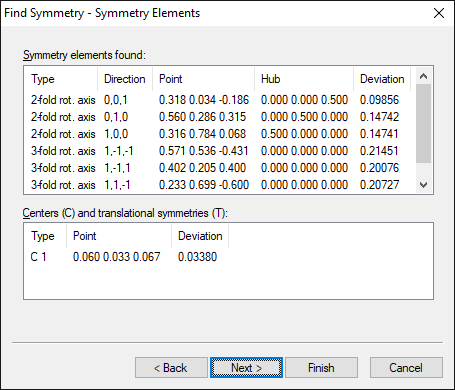 |
In the second step, the symmetry
elements found in the structural model are listed. |
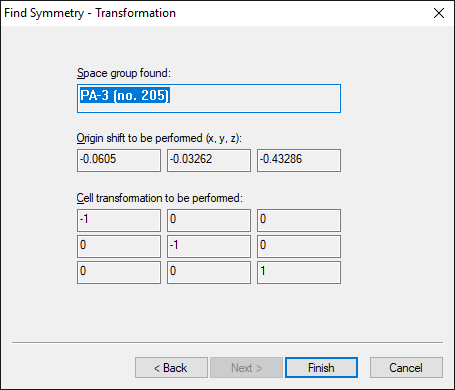 |
Afterwards, the space-group is
calculated from this list of symmetry elements. |
Finally, the space-group is applied to the model; the atoms are located on
special positions, thus the number of atoms in the asymmetric unit is reduced.
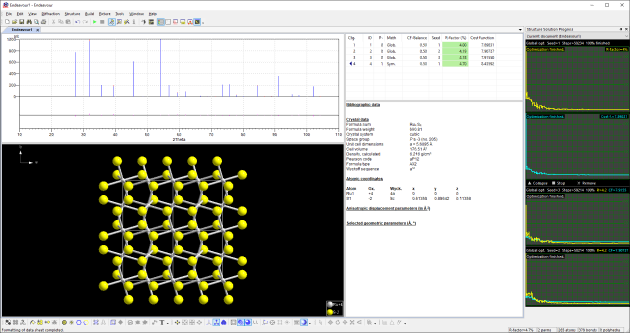
It should be noted that the symmetry-finder in Endeavour can also be used to
check whether an already solved crystal structure contains undiscovered
symmetry elements and could thus be described in a higher space-group!
Endeavour Features Overview...
Previous: Structure Solution Wizard...
Next: Molecular Structures...
|

